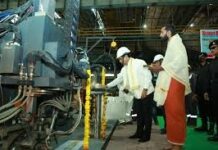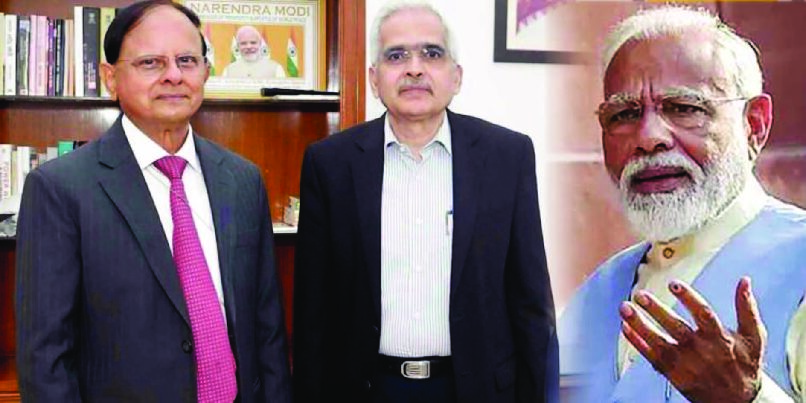Odisha is expected to be the hub of downstream and ancillary industries in Chemical & Petrochemical sectors in the next five years. Leading organizations & Research institutions like CIPCT, IIT & ODCL can lead the movement from the front. The State must take the initiative to formulate a policy for plastic processing industry.
Internationally India has become an important actor in sustainable global development. Forming the ‘I’ in “BRICS” group of nations, India plays a very important role in the leadership of the emerging markets and developing nations. India boosts a culture of entrepreneurship and innovation, pioneering the global IT services industry and has a global Diaspora that are leaders in various fields.
CHEMICAL INDUSTRY:
Indian chemical industry has witnessed robust growth in the past decade and has been ranked 6th largest in Asia according to United Nations Industrial Development Organizations (UNIDO). The industry has been forecast to reach USD 200 billion mark by 2020. Strong domestic demand driven by increasing purchasing power parity in the country is one of the main pillars of Indian manufacturing sector and India is expected to maintain the healthy growth in the years to come. India’s geographic location provides easy access to the world market and low cost advantage, availability of skilled manpower and talented pool make India the destination of choice.
India Government is rendering extensive support to give impetus to the Indian Chemical Industry and has set up the task force to consider suggestions for National Chemical Policy to ensure steady growth of country’s chemical sector.
Chemical Industry is one of the oldest industries in India and this industry includes Petrochemicals and alcohol-based chemicals, has grown at a pace out performing the overall growth of the industry. This industry comprises of the companies that produce industrial chemicals. It converts raw materials (natural gas, oil, water, air, minerals) into more than 70,000 different products. Globally this industry dominates about 80% of the industrial output in producing polymers & plastics, especially polyethylene, polypropylene, PVC, Polystyrene etc. The chemical industry also manufacture fertilizers and agrochemicals from food production, synthetic fibers for clothing, materials for housing and amenities and medicines for health. Dyes, Pigments, Perfumes, Flavours, Plastics and other specialty chemicals produced by chemical industries make our life more comfortable and enjoyable. However the other side of the coin is that this industry earns a bad name due to its adverse impact on internal and external environment. In Indian context these industries comprises of both small & large scale units. The fiscal concessions granted to small sectors in mid-eighties led to the establishment of large number of units in the small scale industrial (SSI) sector. With the shift of priority on product innovation, brand building and environmental friendliness, this industry is increasingly moving towards greater customer orientation. Although India has an abundant supply of basic raw materials but it will have to build upon technical services and marketing capabilities to face global competition and increase its share of exports.
Petrochemicals:
Petrochemical industry is the most lucrative industry in India and is likely to touch USD 100 billion by 2020, more than double the current size of about USD 40 billion. Petrochemical industry is a cyclical industry. Globally the petrochemical industry is characterized by sluggish demand and volatile feedstock prices. The building blocks of the organic chemical industry, the olefins and the aromatics are derived from petroleum sources. Intermediates such as dimethyl terephthalate and detergent raw materials and various solvents are also produced in these units. In India the consumption of petrochemical products is still one of the lowest in the world. For example in case of polyester. India’s per capita consumption is 1.4 Kg compared to 6.6 Kg for China and 3.3 Kg for the world. In case of polymers, per capita consumption of India is 4 Kg and is about a fifth of the world. Current per capita consumption of plastics in India is one sixth of the world average. Further majority of current consumption is being met through import. This indicates the tremendous potential and at the same time a total short-sightedness of the industry in not planning expansion in line with the market demand. Further these are highly capital intensive. On the other hand the downstream operations and particularly conversion are less capital intensive and more labour intensive, which ideally suited to meet Indian Socio-economic needs. For foreign investors, the plus factors include; high rate of return, enormous technical and skilled manpower, assured repatriation and more or less a very stable Rupee.
The petrochemical industry which entered in the Indian Industrial Scene in 1970s, registered a rapid growth in 1980s and 1990s. Petrochemical industry mainly comprises of synthetic fiber / yarns, polymers, synthetic rubber, detergent intermediates and plastic processing industries. To boost the investment and growth in petrochemical sector, Government of India announced the national policy on petrochemicals in April 2007.
Petrochemical industry contributes about 30 percent to country’s USD 120 billion worth chemical industry which is likely to grow at an average growth rate of 11 percent over the next few years and touch USD 250 billion by 2020. Petrochemical sector is one of the fastest growing segment with a growth rate of 13 percent which is more than twice of the growth of India’s gross domestic product (GDP) and global growth rate in petrochemical sector is strongest at 6 percent. The domestic petrochemical industry is in the process of investing over 25 billion to meet the surging demand while merger acquisition (M & A) opportunities are among the key imperatives for the sector.
In order to implement the national policy, the Department of Chemicals & Petrochemicals stressed more on Research & Development and prepared a visionary document in terms of raw material usage, energy efficiency, process improvement, technology forecasting and adoption of emerging technologies in particular on recycling technologies for high performance polymers, thrust on new platforms, bio/nano sciences as enables for advanced polymeric materials which are the need of the hour. The level of R&D investments in Indian Chemical Sector is as low as around 0.2% of total sales. Currently the expenditure on R&D in the petrochemical sector is less than 1% of industry turnover. This needs to be increased in phases to 2 to 3%. As per latest report published in the “Business Standard” India’s petrochemical industries will double its production capacity by 2014-15. The sector which is showing sign of recovery is expected to benefit from increase in local and overseas demand. Polypropylene production capacity is forecast to increase appreciable during the current financial year. Volatility of crude oil prices and erratic global demand have slowed the growth of domestic petrochemical sector.
Indian refining sector has increased from 68.2 MMTPA to current 254 MMTPA is expected to reach 333 MMTPA by 2022 and seen investments of over INR 3,00,000 Crore since 1998. In the bid to maintain healthy Gross refinery margins (GRMS) refiners are widening product baskets through downstream capacity additions to produce value added petrochemical products, setting up delayed Coker units, adopting new technologies to improve top line margins and reduce operational costs.
Related Segments:
The wide and diverse spectrum of products can be broken down into a number of categories, including inorganic and organic (commodity) chemicals, drugs and pharmaceuticals, plastics & petrochemicals, dyes & pigments, fine and specialty chemicals, pesticides and agrochemicals and fertilizers. The basic inorganic and organic chemical industry constitutes a major segment of the country’s economy. Important chemicals in this category are Soda Ash, Caustic Soda, Liquid Chlorine, Calcium Carbide, Acetic Acid, Phenol etc. These are the raw materials for industries like detergents, toothpaste, plastics, drugs, petroleum refining etc.
The Indian Pharmaceutical industry is the largest in the developing world and currently produces a wide range of bulk drugs. India is emerging as one of the largest and cheapest producers of Pharmaceuticals in the world. Regarding pesticides and agro-chemicals India is currently the largest manufacture in Asia and is the 13th largest exporter of pesticides and disinfectants in the World.
State Scenario:
Odisha has achieved an impressive real growth rate of 5.60 percent in financial year 2014-15. Agriculture & allied sector remains one of the prime focus sectors for rapid, inclusive and sustainable growth of the state. The state is experiencing structural transformation with sectoral shift towards industry & service sectors. These two sectors account for bulk of state’s GSDP with 25.40 percent and 59.02 percent share respectively. Odisha being a mineral rich state is a natural destination for investment in mineral based industries in the state. But despite of this, poverty and unemployment remains a matter of concern notwithstanding the fact that Odisha is a leading state in the country to have had the fastest reduction of poverty by 24.61 percent. Although the figure shows very promising in pen and paper but in reality the absence of full-fledged production of mega steel projects and other industries as well as the lack of attitude to install giant petrochemical complex and ancillary chemical industries in past are the key factors for the hindrance of state’s growth economy. Despite of being a stable Government in the state for last sixteen years, lack of political will and foresightedness compel the state to put in a Jinx. However the recent policy of the Central Government and their announcement to make Odisha a hub of petrochemical and chemical industries shows a sign of relief.
STATE PCPIR:
Petrochemical industry has been one of the fastest growing sectors in the country and provides large scale employment opportunity. To promote investment in petroleum, chemicals and petrochemical, the state has placed this sector in the list of priority sectors.
The Government of Odisha has initiated steps to create mega integrated Petroleum Chemicals and Petrochemicals Investment Region (PC PIR) on 284 acres in Jagatsinghpur & Kendrapara districts. This is the 4th PCPIR in the country and IOCL is the anchor tenant in this PCPIR. An SPV “Paradeep Investment Region Development Limited” has also been formed for the implementation of infrastructure in the Region.
In order to sustain the current investment level and attract future investments, high quality supporting industrial and social infrastructure is a key requirement. A large part of the investment is to come from the private sector in the Public Private Partnership (PPP) mode as one of the preferred routes. The Odisha Public Private Partnership policy was introduced in 2007 to supplement limited public resources, create a more competitive environment, help improve efficiencies & reduce costs. Planning and Coordination Department has been designated as the nodal Department and the Odisha Industrial Infrastructure Development Corporation (IDCO) as the technical secretariat for promotion of PPP Projects. The High Level Clearance Committee (HLCA) established under the Chairmanship of the Chief Minister approved all infrastructure projects of over Rs. 500 crore being undertakes in PPP mode. The state has also constituted Empowered Committee on Infrastructure (ECI) consisting of a group of Secretaries under the Chairmanship of the Chief Secretary for facilitating infrastructure development in the state under PPP. The State Government has already created a “Land Bank” to meet the land requirements of anchor industries which have huge employment potential. A time bound action plan to implement and upgrade the maintenance & infrastructure facilities broadly aligned with the challenging needs in view of the current & emerging industrial scenario in the state has been initiated.
Current Status:
Odisha’s mega Chemical & Petrochemical Complex is very much limited to Paradip. Due to closure of the State owned Paradeep Phosphate Limited and Fertiliser Plant at Talcher, the state has suffered a lot. Since Odisha’s economy is based on agriculture sector the importance of fertilizer plant in the state has a special impact on the growth and development of the state. This problem is not only limited to Odisha’s Fertiliser Plant alone. Several Fertiliser Plants have stopped production in India due to inadequate gas supply from the domestic market. This resulted in India importing over 15 lakh tones of fertilizers at higher prices. But despite of that the state has a good news to be elated. Under the prevailing circumstances the fertilizer industry got a boost by the announcement of a joint venture pact signed by Coal India, GAIL, RCF and the Fertiliser Corporation of India to set up an integrated coal gasification-cum-fertiliser and ammonium nitrate complex at Talcher in Odisha by 2019.
This recent announcement by three Union Ministers (the Minister of Chemicals & Fertilizers, the Minister of State for Petroleum & Natural Gas) (the Minister of State for Power, Coal & new & renewable energy) in this regard brought a new hope for the state. Press report indicates that the upstream venture costing Rs. 3000 crores, is to be called GAIL COAL GAS INDIA LIMITED & GAIL will hold 35% stake in the same. Fertilizer Corporation of India Limited will hold 11%, RCF & Coal India will hold 3% stake each, while the balance of 48% will be given to the technology provider & financial institutions. The name of the technology provider is yet to be announced. The upstream project is for converting coal into synthetic gas and the downstream plant proposes to manufacture urea & other fertilizers. The downstream venture, to be called TALCHER CHEMICALS & FERTILISERS LIMITED will be headed by RCF & Coal India, each of whom will hold a 40% stake, while GAIL & FCIL will take the balance of 10% each. This plant is expected to manufacture 1.3 million tons of urea. Two coal blocks have been earmarked for this project; one has been allocated and the other is a stand by and kept as reserve. The development work to mine coal in this allocated block will start very soon.
IOCL Paradeep:
Indian Oil Corporation Limited (IOCL) Is India’s largest commercial enterprise headquarter at Delhi, with a sales turnover of Rs. 4,50,756 Crore (US $ 73.7 billion) profits of Rs. 5273 Crore for the year 2014-15. It is also the leading Indian Corporate in fortune’s prestigious, ‘Global 500’ listing of the world’s largest corporate ranked at the 119th position for the year 2015. Indian Oil’s business interests straddle the entire hydrocarbon value chain from refining, Pipeline transportation and marketing of petroleum products to exploration and production of crude oil and gas, marketing of natural gas and petrochemical’s, besides forays into alternative energy and globalization of downstream operations. Having set up subsidiaries in SRILANKA, MAURITIUS and the UAE, the corporation is simultaneously scouting for new business opportunities in the energy markets of Asia and Africa. It has also formed about 20 joint ventures with reputed business partners from India and abroad to pursue diverse business interests.
Indian Oil Corporations latest refinery in Paradeep, Odisha, the first in over a decade is the nation’s largest fuel major started production of Petrol from the Rs. 34555 Crore facility with its 3.9 MMTPA motor spirits unit going critical. The plant is looking for VGO-HDT to be commissioned. The refinery complex is the most modern facility in the country and is also the first and the largest grrenfield facility on the East Coast. This 15 million tone refinery is also the largest on the country’s Eastern Coast and is equipped with the latest technology including IOC’s own patented ‘Ind Max’ technology for better and higher LPG output. The refinery complex spans over 2100 acres, while the proposed Rs. 35,000 Crore petrochem will come up on the north bank of the jetty. It also has a 17 meter deep natural draft for its oil jetty that can berth very large ships and has captive multi fuel power plant that can generate over 360 Megawatt electricity. The paradeep refinery is the symbol of Prime Minister’s brain child “Make in India”. The in-house technically innovation of Indian Oil’s R & D – the “INDMAX” technology. The sculpture is a national salute to Hon’ble Prime Minister’s initiative to take India to the next level of growth by attracting big investments in the country and giving a boost to Indian skill and trade for economic development. The INDMAX technology implementation will double LPG gas to every household in next three years. At present approximately 50 percent of LPG is imported in the country. This is the most elated news for the state to be self reliant. But the fact which worries the State Government is the deficit in tax collection of about 2000 Crore from petroleum products for the next eleven years. The state think tanks has to remember that the loss is only notional as the company will pay back the taxes after 11 years albeit without interest on it. Second and the vital point is that the increase in capacity no way increases the burden of the national revenue loss as the product exposure of the company in the Odisha market may not go up significantly from the present level with the enhancement of refinery capacity. At present IOCL has 65 percent market of petroleum products in Odisha which earns about Rs. 300 Crore from this sector towards sales tax, accounting for nearly 25 percent of the state’s total VAT/Sales tax collection anualy. On the other hand the State Government claim over the loss is quite genuine as it has hiked sales tax rate on petroleum product twice in the past i. e. from 20 percent to 23 percent in 2014 and to 26 percent in 2016.
Other project wise investments include GAIL (India) Ltd’s Surat – Paradeep pipe line (Rs. 5500 crore), Paradeep-Haldia-Durgapur LPG pipe line (Rs. 257 crore), Paradeep-Haldia-Barauni crude pipe line (Rs.321 crore), LPG terminal at Paradeep (Rs.2500 crore), LNG terminal at Paradeep (Rs. 5000 crore), Paradeep-Surat and Ranchi-Paradeep natural gas pipe lines (Rs. 5000 crore), City Gas Distribution Network (Rs.1600 crore), strategic oil reserve at Chandikhole (Rs. 3800 crore).
Opportunities:
The massive project investment in Petrochemicals & Fertilizer sector in the state by the giant companies marked the dawn of a new era for industrial development not only in Odisha but also in entire eastern India. The investment plan by the Petroleum Ministry is aimed at positioning Odisha as the gateway of energy security in Eastern India. It will create 50000 jobs in the state. The investment will also generate direct revenue of Rs. 3000 crore every year for the State Government. Incremental revenue will start flowing in from the financial year 2015-16. From monoethylene glycol the development of downstream and ancillary industries will create a new era of development. Monoethylene glycol has a wide range of uses, from making polyster chips, PET bottles and industrial yarn to coolants, paints and wire enamel among others.
From the two joint ventures to revive the closed Urea Plant at Talcher & upstream gasification unit, the state can look forward for massive employment not only for the people of Odisha but also for the entire north eastern parts of the country. This is perhaps the first Greenfield plant in the fertilizer sector in almost in the last ten years. The upcoming Chemical & Petrochemical industries has the capacity for major value addition and Odisha is expected to be the hub of downstream and ancillary industries of these sectors in the next five years. Leading Government organizations & Research institutions in the state like CIPCT, IIT & ODCL will lead the movement from the front. The State Government must take the initiative to formulate a policy for plastic processing industry which is highly fragmented. Even the fibre processor industry in the state is very negligible and this sector along with surfactant sector should be encouraged to play a predominant role in the state SSI sectors. In certain categories of chemicals Odisha has the opportunity and advantage to export its products also (like dyes and Agrochemicals). So, it is right time for the State Government to segregate the current status of derivatives of chemicals & petrochemicals in the state and formulate separate policies for its growth and development. Although the State Government has taken lot of initiatives in formulating the policy for chemical and petrochemicals in 2007 but nothing has achieved so far. Since these projects are different from others and has long gestation period by implementing these projects in time can have a significant impact on infrastructure development and upliftment of the status of port facilities in addition to normal social and economic development.
Conclusion:
The chemical sector seems to have a bright future but quest for feedstock, knowledge management and nurturing an eco-friendly environment have remained major challenges in this sector. In a federal system like us it is imperative to have a proper co-ordination between the centre and the state to strengthen the industrialization process of the state. When most of our industries are mineral based and this mega sector is facing serious recession we should try to shift our outlook to other viable sectors. Business means professionalism which can be generated from a conducive climate mixed up with creativity and innovation. Odisha is a land of opportunity and possibility. But its road to greatness is neither assured nor earmarked what we become will depend on what we do. We have too many expectations but least commitments sustainable development is the pathway to the future we want for all. It offers a framework to generate economic growth, achieve social justice, exercise, environmental, stewardship and strengthen good governance. Economic growth and environment protection are not at odds. These are opposite sides of the same coin if we are looking for long term prosperity. Bureaucratic lapses, slow decision making and poor execution have led Odisha to miss several opportunities in the past. As the state is struggling with slow economic growth and huge pool of educated unemployment, the commissioning of IOCL refinery in time is perhaps the greatest gift to us. Long gestation period clubbed with plethora of controversies delayed the project for a long period. However the project has been commissioned and this is the most opportune moment for us to be elated and derive a viable and sustainable environment friendly policy along with the development of its ancillary and downstream industries for an inclusive growth of the state and to enrich the quality of life for the people of the state.











































